How was photography politicized between 1914 and 1960? In other words, what political functions did photography serve in the mid-twentieth century? And, what formal approaches did photographers take to fulfill those functions?
Even though initially, photography used to be referred to in terms of a politically neutral technology/art, as time went on, it was becoming increasingly looked upon as the representational medium of politics. In its turn, this can be explained by the fact that, as compared to other methods of the surrounding reality’s depiction, photography is capable of accentuating the realness of the photographed events/objects. As Nickel noted: “(Photographic) snapshots present themselves like clues to our inexplicable presence on earth” (14). The medium of photography is also able to prompt viewers to contemplate on the discursive implications of the photographic works in question while enabling photographers to hypertrophy the aesthetic appeal of the ideology with which they happened to be affiliated.
This, of course, creates objective preconditions for photography to serve as the tool of political propaganda – while exposed to the politically charged photographic images, people inevitably adopt a strong emotional attitude (positive or negative) towards what is being depicted.
The validity of this thesis can be well illustrated in regards to the 1936 photo Wife of a Sharecropper by Walker Evans:
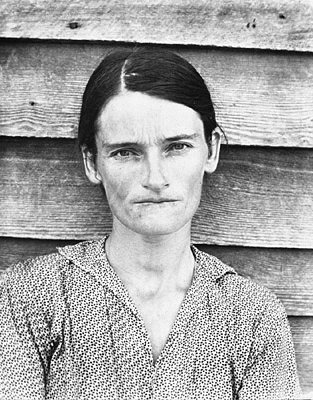
The deployment of the realist technique to shooting this particular photo allowed Walker to come up with a strongly defined political statement: the Great Depression was causing many American women to grow physically and psychologically ‘masculinized’ – all due to their continual exposure to economic hardships.
Essentially the same suggestion applies when it comes to discussing what contributed to the appeal of Joe Rosenthal’s famous 1945 photo Raising the Flag on Iwo Jima:
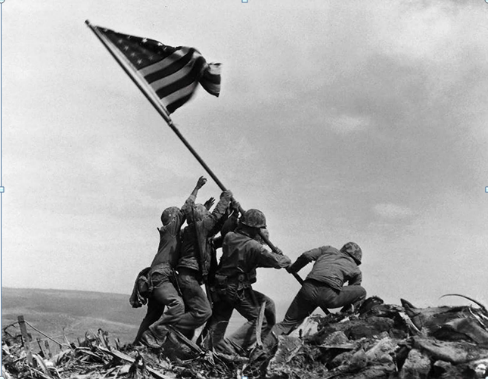
It is specifically the fact that, while taking this photo, Rosenthal was able to ensure the dramatic allure of the depicted action, by the mean of accentuating its realistic casualness, which endowed the above-photo with what Kerouac used to refer to as the spirit of ‘Americanness’ (1).
Another example of a thoroughly politicized photo, which during the course of the thirties was meant to promote the cause of Communism, is Alexander Rodchenko’s Pioneer with Trumpet:
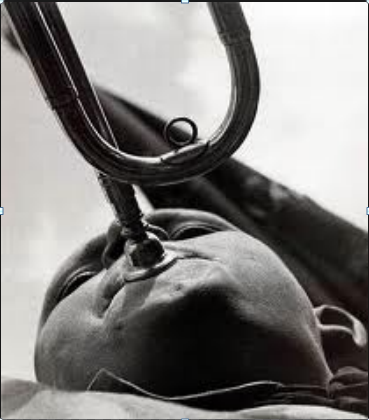
There are clearly defined expressionist undertones to this photo, concerned with the author’s intention to emphasize the sheer vigor of Communist youth in the USSR. For example, the fact that it is quite impossible to identify the depicted person, whose face is being photographed from the unconventional ‘down to the top’ viewpoint (Rodchenko 211), was meant to cause viewers to think of him as the embodiment of all Soviet children (pioneers), committed to the ideology of Communism.
While striving to endow their works with the political sounding, throughout the course of the 20th century’s first half, many photographers used to utilize the technique of collage, concerned with combining the elements of photography with the elements of a propaganda-art. Gustav Klutsis’s 1930 poster Workers: Everyone Vote in the Soviet Elections exemplifies this suggestion:
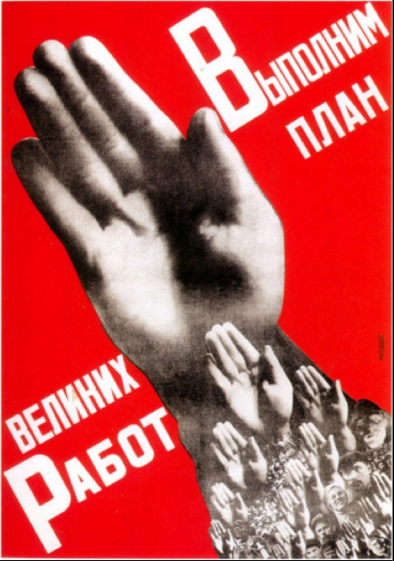
The photographer’s rationale for choosing in favor of the earlier mentioned technique while creating this poster is quite clear – he wanted the featured ideological slogan to emanate a strong emotional appeal.
Thus, just as it was implied earlier, it is indeed fully appropriate to refer to photography as the artistic technology ‘destined’ to become a tool of political propaganda because it provides this propaganda’s creators with a number of different methodological approaches to increasing the emotional integrity of the conveyed political messages.
In the mid-twentieth century, photography was used both to estrange the familiar and to make the foreign known. What strategies did photographers use to make the ordinary seem extraordinary, and the remote seem relatable? What about the medium of photography supposedly made it suitable for these tasks?
One of the reasons why, instead of being referred to solely in terms of an art-related technology, many people consider photography the de facto art is that the representational medium in question makes it possible for photographers to reveal the hidden subtleties of the photographed objects/events. As Benjamin pointed out: “Photographic reproduction, with the aid of certain processes… can capture images which escape natural vision” (218). In this short essay, I will explore the validity of this suggestion at length.
Probably the most famous example of how photography can well estrange the familiar is Edward Weston’s 1930 photo Pepper No. 30:
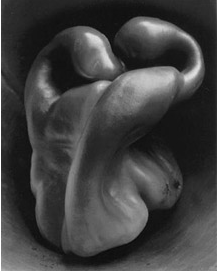
It has been well noted that those unfamiliar with what is being actually depicted in this photo tend to refer to the photographed object as being just about anything but the kind of vegetables that they consume regularly. For example, after having been exposed to the Pepper No. 30 for the first time, many individuals end up being unable to identify the actual object while nevertheless continuing to believe that there is a strongly defined aura of sexuality to it. Yet, the secret of Weston’s ability to estrange this paper in the eyes of onlookers is simple – he applied only the illumination from above while photographing it.
Man Ray’s 1924 photo Ingres’ Violin is another good example of photography’s ability to prompt viewers to recognize extraordinary qualities in the ordinary manifestations of the surrounding reality:
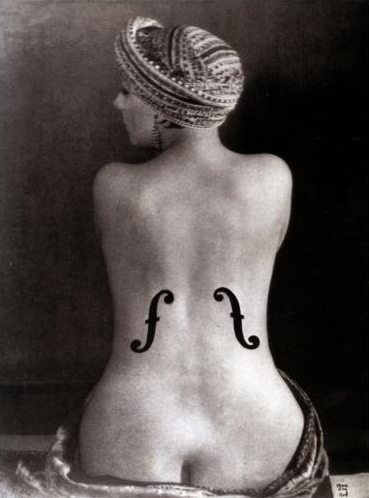
On it, onlookers get to observe a seated (naked) woman from behind, who automatically invokes the image of a violin in their minds. The reason for this is apparent – after having developed this particular photo, Ray drew f-holes on the model’s back – hence, causing the curves of her body to be perceived, as such that indeed remind those of a violin. This illustrates the validity of Strand’s idea that in photography: “The objects… may be used as abstract forms, to create an emotion unrelated to the objectivity as such” (142). Apparently, contrary to what it is commonly assumed, the photographic objectivization of people serves essentially humanistic purposes (Sandburg 1).
What photographers often do, within the context of striving to deprive commonplace objects of their ordinariness, is shooting them in such a manner that these objects would be consistent with the unconscious anxieties of viewers. For example, in Margaret Bourke-White’s 1930 photo Plow Blades, the depicted agricultural instruments are being clearly reminiscent of sharp-edged blades of some sort, which in turn causes onlookers to associate this photographic image with the notion of war, rather than with the notion of agriculture.
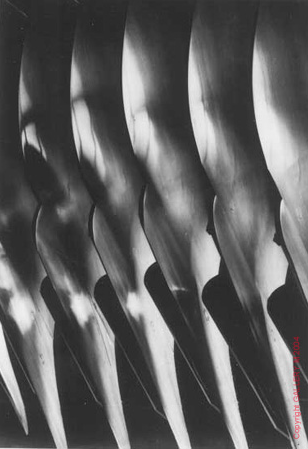
However, as was pointed out earlier, it is not only that photographers often strive to ‘mystify’ commonplace objects/events, but many of them succeed in doing something entirely opposite – namely, in making viewers emotionally comfortable/familiar with the unknown/strange. The legitimacy of this statement can be illustrated in regards to Le Charles’s 1923 photo Praying Mantis:
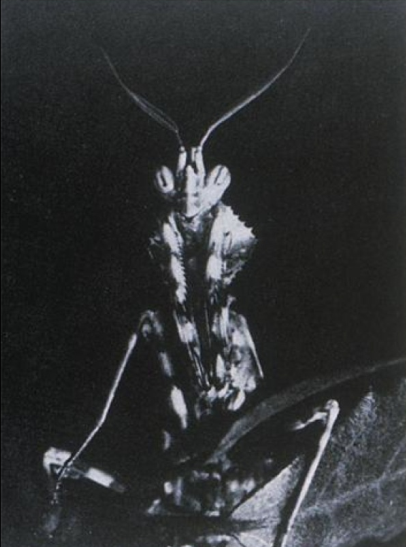
While understanding perfectly well that the majority of people who would be exposed to this photo are rather unfamiliar with the depicted insect, Le Charles made a deliberate point in photographing it in the manner subliminal of the pose of a praying person, and in supplying the final product with the appropriate ‘cognition-guiding’ name.
I believe that the earlier deployed line of argumentation, in regards to what can be considered the main photographic techniques of estranging the familiar and making the foreign known, is fully consistent with the essay’s initial thesis.
The mid-twentieth century was marked by conflict, and photographers were on hand to document it. What ethical issues do the resulting photographs of trauma and hardship raise? What are the arguments for and against “victim photography”? Where do you stand in the debate?
In all probability, the most emotionally powerful photographic images are the ones that depict war in making. The reason for this is simple – it is in the very nature of these images to feature what account for the actual consequences of just about any prolonged war, such as piles of mutilated corpses, children with their limbs torn off and formerly beautiful cities, turned into the smoldering ruins. Therefore, even though the photos of war tend to be emotionally disturbing, they nevertheless contribute to the humanity’s betterment, as they expose the fallaciousness of an illusion that there can be any ‘glory’ to the activity of people killing each other (Sontag 82). Let us explore this thesis at greater length.
As it was implied earlier, there are objective preconditions for the photos of war to be utterly graphic, in how they represent death. In this respect, the 1969 poster And Babies, comes in particularly illustrative:
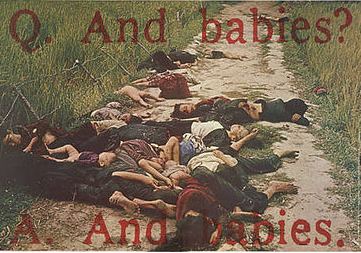
As it can be well seen, this poster contains the image of murdered women and children. Yet, despite the sheer horror of the scene in the photo, during the time of war, scenes like that are common occurrences. By presenting those Americans who never saw the face of war with the above-image, the photographer wanted to help them to gain a better understanding, as to what the notion of a ‘collateral damage’ actually stands for.
Essentially the same can be said about the discursive significance of Nick Ut’s 1972 photo Trang Bang, Vietnam, which proves the validity of Weston’s suggestion that: “The photographer’s most important and likewise most difficult task is not learning to manage his camera, or to develop, or to print. It is learning to see photographically” (173).
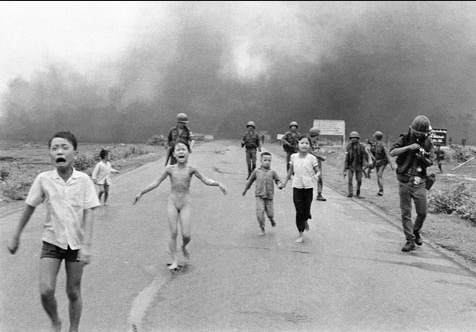
Taken during the course of the Vietnam War, this photo exposes viewers to what are the practical methods of how the U.S. goes about spreading ‘democracy’ over the world. Apparently, ‘democracy’ is such a blessing that those who resist accepting it, (and consequently allowing the U.S. transnational corporations to assume control of the area’s natural resources), well deserve to be chased away from their homes stripped naked – even if the concerned individuals are children.
War-photos prompt people to realize that, contrary to the officially sponsored viewpoint on the subject matter, war is not about ‘courage’, ‘sacrifice’ and ‘glory’ – it is ultimately about people’s brains being splattered all around:
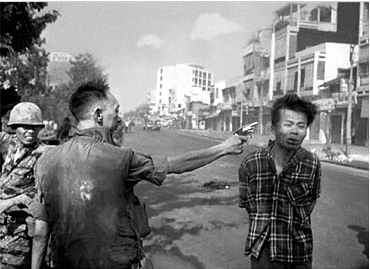
As Kunimoto suggested: “Testimony is thus a means to recovery” (147).
What is also valuable about the graphic photos of war, is that they point out to the fact that there can no no good enough exuses that may justify the war-induced carnage. After all, throughout the course of history, no war has been fought for the explicit purpose of destruction and enslavement – it is always the considerations of defending ‘civilization’ or ‘culture’, which used to justify the outbreaks of armed hostilities. Yet, as practice indicates, the more war-participants discuss the nobleness of their cause, the more barbaric is their act:
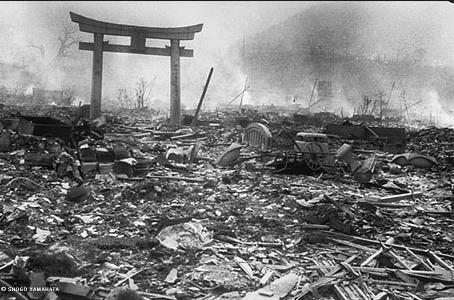
Thus, in full accordance with the initial thesis, we can reinstate once again that there is nothing unethical about particularly graphic war-photos. What is unethical, is assuming that citizens will be so much better off psychologically, while denied the opportunity of have a photographic glimpse into what war really is. After all, it is not really the citizens’ psychological well-being, which concerns the self-appointed ‘guardians of public morality’, but the fact that, after having been exposed to the photographically documented horrors of war, ordinary people would be less enthusiastic about the prospect of being sent to the frontline and consequently turned into the ‘cannon meat’.
Works Cited
Benjamin, Walter. The Work of Art in the Age of Mechanical Reproduction Kerouac, Jack. Introduction to the Americans.
Kunimoto, Namiko. Intimate Archives: Japanese-Canadian Family Photography, 1939-1949.
Nickel, Douglas. The Snapshot. Some Notes.
Rodchenko, Alexander. The Paths of Contemporary Photography.
Sandburg, Carl. Prologue.
Sontag, Susan. Looking at War.
Strand, Paul. Photography and Photography and the New God.
Weston Edward. Seeing Photographically.